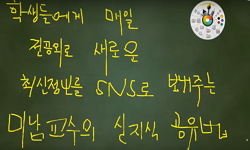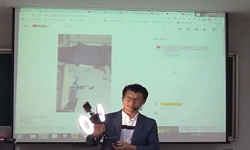This study is an exploratory research that aims to investigate how homosexual men perceive and use social media, focusing on the three main online spaces they use the most: social networking sites (SNS), online communities, and dating apps. The study ...
http://chineseinput.net/에서 pinyin(병음)방식으로 중국어를 변환할 수 있습니다.
변환된 중국어를 복사하여 사용하시면 됩니다.
- 中文 을 입력하시려면 zhongwen을 입력하시고 space를누르시면됩니다.
- 北京 을 입력하시려면 beijing을 입력하시고 space를 누르시면 됩니다.

남성 동성애자의 소셜미디어에 인식과 이용에 관한 탐색적 연구 : SNS, 인터넷 커뮤니티, 데이팅앱이 남성 동성애자의 사회적 관계에 미치는 영향을 중심으로 = An Exploratory Study of Male Homosexuals' Awareness and Use of Social Media : Focusing on the Impact of Social Media, Internet Communities, and Dating Apps on Male Homosexuals' Social Relationships
한글로보기https://www.riss.kr/link?id=A108729320
- 저자
- 발행기관
- 학술지명
- 권호사항
-
발행연도
2023
-
작성언어
Korean
- 주제어
-
등재정보
KCI우수등재
-
자료형태
학술저널
- 발행기관 URL
-
수록면
5-46(42쪽)
- 제공처
-
0
상세조회 -
0
다운로드
부가정보
다국어 초록 (Multilingual Abstract)
This study is an exploratory research that aims to investigate how homosexual men perceive and use social media, focusing on the three main online spaces they use the most: social networking sites (SNS), online communities, and dating apps. The study explores the roles, functions, and meanings of SNS, online communities, and dating apps through the eyes of homosexual men. It also looks into whether using these platforms has an impact on online social support, social capital, and emotional outcomes such as loneliness. A mixed-methods strategy was used to accomplish the research goals, and adult homosexual men in South Korea who had previously used the designated social media platforms participated in in-depth interviews and an online survey. The study was conducted from February 2, 2023, to February 13, 2023, with eight participants being interviewed, and 145 survey responses were collected, out of which 140 were utilized for the analysis. The findings revealed that while SNS, internet communities, and dating apps were commonly expected to serve the function of confirming the presence of others, each online space was observed to elicit distinct expectations based on its usage. Moreover, social media was perceived to hold a semi-essential meaning in homosexual men's social relationships, coexisting as a means to overcome physical space limitations and enhance physical space density. Regarding the impact on social capital, the analysis of the online survey indicated that the usage of internet communities and dating apps did not significantly affect social capital. However, SNS usage demonstrated a static effect on social capital. In-depth interviews highlighted that homosexual men utilize social media to gain a sense of support and security by confirming the presence of others. However, the experience of loneliness was perceived to manifest in complex patterns, with potential increases or decreases depending on the context. According to statistical analysis, SNS usage had a significant impact on online social support, while for loneliness, the statistical model's fit (F-statistic) was not significant, indicating that exploring the influence of homosexual men's social media usage on loneliness was not appropriate. In conclusion, this study holds significance because it illuminates an understudied facet of homosexual men's social media usage in South Korea and aims to provide a comprehensive understanding through a mixed-methods approach. However, it is essential to consider limitations such as potential participant bias towards specific social media platforms, inadequate consideration of differences among each online space, and the small sample size in the interpretation of the findings.
국문 초록 (Abstract)
본 연구는 남성동성애자의 소셜미디어에 대한 인식과 이용에 관한 영향을 탐색적으로 살펴본 연구로서, 당사자들이 주로 이용하는 온라인 공간인 SNS, 인터넷 커뮤니티, 데이팅앱이 사회적 ...
본 연구는 남성동성애자의 소셜미디어에 대한 인식과 이용에 관한 영향을 탐색적으로 살펴본 연구로서, 당사자들이 주로 이용하는 온라인 공간인 SNS, 인터넷 커뮤니티, 데이팅앱이 사회적 관계에서 미치는 영향을 알아보고자 진행됐다. 남성 동성애자에게 SNS, 인터넷 커뮤니티, 데이팅앱과 같은 소셜미디어가 어떠한 기능, 의미, 역할로 인식되는지 살펴보고, 이용에 따라 사회자본이나 온라인 사회적지지, 외로움과 같은 정서적 영향을 받는지 확인했다. 이를 위해 해당 소셜미디어를 이용해본 경험이 있는 국내 성인 남성 동성애자를 대상으로 심층인터뷰와 온라인 설문조사를 통해 자료를 수집하고 분석하는 혼합연구방법을 적용했다. 2023.02.02.~02.13.까지 8명을 대상으로 심층인터뷰를 진행하고, 온라인 설문조사는 총 145명의 응답을 수집해 140건을 분석에 활용했다. 분석결과 남성 동성애자에게 SNS, 인터넷 커뮤니티, 데이팅앱은 타인의 존재를 확인할 수 있다는 점에서 공통된 기능이 기대되기도 했으나 각 온라인 공간별로 고유한 기대가 존재하는 것으로 관찰됐다. 또한, 남성동성애자의 사회적 관계에서 소셜미디어는 반(半)필수적인 의미를 갖는 것으로 인식됐으며, 물리적 공간의 한계를 극복하는 역할과 물리적 공간의 밀집을 강화하는 역할이 공존하는 것으로 나타났다. 온라인 설문조사를 분석한 결과 인터넷 커뮤니티나 데이팅앱 이용량은 사회 자본에 유의한 영향을 미치지 않았으나, SNS이용량은 정적인 영향을 미치는 것으로 나타났다. 심층 인터뷰에 따르면 남성 동성애자 사이의 사회적 관계에서 소셜미디어를 이용하는 것은 본인이 아닌 다른 당사자를 확인함으로서 지지감과 안정감을 얻는 한편, 외로움은 증가하거나 감소하는 양상이 복합적으로 나타난다고 인식됐다. 통계적 분석결과에 따르면 온라인 사회적 지지의 경우 인터넷 커뮤니티, 데이팅앱 이용량은 유의한 영향을 미치지 않았으나 SNS이용량은 정적인 영향을 미치는 것으로 나타났다. 외로움의 경우 통계모형의 적합도(F 통계량)가 유의하지 않았으며, 남성동성애자의 소셜미디어 이용량이 외로움에 미치는 영향을 살펴보는 것은 적절하지 않은 것으로 나타났다. 본 연구는 국내에서 주목받지 않았던 남성동성애자의 소셜미디어 이용을 살펴보고, 혼합연구를 적용해 구체적인 내용을 파악하고자 노력했다는 의의가 있으나, 연구참여자들이 특정 소셜미디어에 편중됐을 수 있다는 점, 각각의 온라인 공간에 대한 차이를 충분히 고려하지 못한점, 표본의 수가 적다는 점 등에서 한계가 있다.
동일학술지(권/호) 다른 논문
-
기업에 대한 정당성 압력으로서의 감시견 역할 : 지속가능 경영 뉴스기사의 텍스트 마이닝 분석
- 한국언론학회
- 윤태일
- 2023
- KCI우수등재
-
한국 일간지 시사비평 칼럼은 무엇을, 어떻게 조명하는가? : 미디어 구성주의를 중심으로 살펴본 6개 정부별 내용분석
- 한국언론학회
- 김창숙
- 2023
- KCI우수등재
-
팩트체킹 인공지능 기술과 사실성의 역학 : 현장 참여자의 심층 인터뷰 분석
- 한국언론학회
- 박소영
- 2023
- KCI우수등재
-
온라인 댓글의 주제 분석을 위한 토픽 모델링 : 이슈 포착과 분류에 활용 가능한 LDA와 BTM의 비교와 검증
- 한국언론학회
- 이신행
- 2023
- KCI우수등재




 DBpia
DBpia






